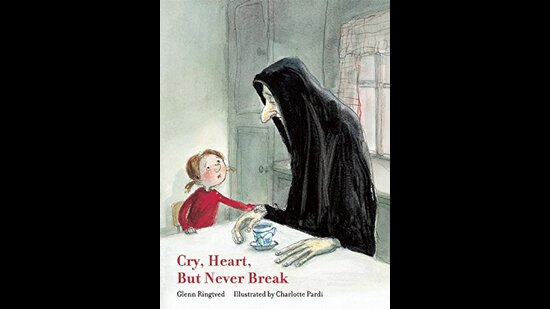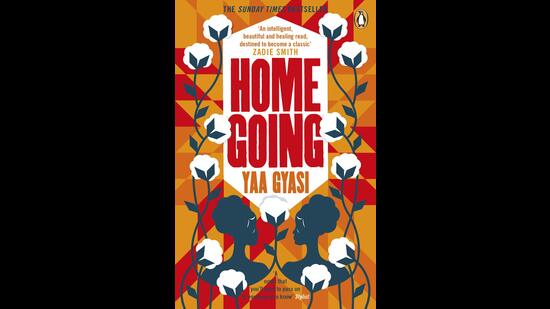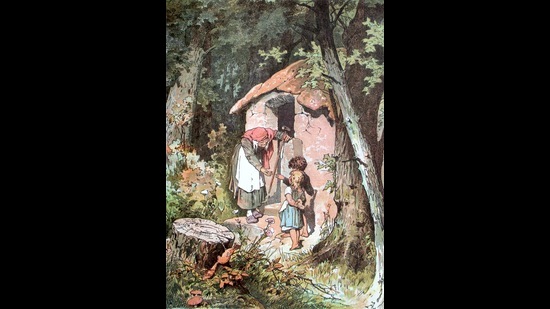Looking at reality without filters
Author of business books, Nishka Rathi (42) who devours fiction for Young Adults, believes books meant squarely for adults are often cynical and predictable. She particularly returns to the work of Diana Wynne Jones and Terry Pratchett because “the way their books tackle situations and talk about reality is neither highly depressing nor very positive.” Rathi believes adults see people through many filters: “’Oh, they’re from this community, or that area, so they’re like this’. But kids see things as they are. So in children’s books, even flaws in people are shown without judgment. It helps you see reality without filters.”
So has the curiosity that frees children’s books and YA fiction and creates room for surprise rubbed off on her?
“It’s possible that I prefer children’s books because I’m eternally curious about lots of things, how they work and about trying new things,” says Rathi who switched from banking to ghostwriting expert and niche titles. She thinks children’s books have also made her parenting more empathetic. “Growing up, our parents just told us, ‘You have to do this, or that.’ Reading these books made me realise the importance of explanations. So, for instance, if an adult speaks in a stern tone, which also carries worry, children, who usually can’t combine both emotions, assume you are upset with them, even if your reasons might be different. When I explain the reasoning to my two kids, I see the difference. They are not so glum,” she says.
Reading children’s books as an adult, Vidhi Kumar Agarwal (31) realised that they always have an underlying message. Goldilocks and the Three Bears and Hansel and Gretel re-entered her life in 2018, when she began teaching creative writing.
“I love children’s books because they’re visually appealing, simple to understand and every story has a moral though it might not always be explicitly mentioned,” says Agarwal who believes morality and ethics should drive businesses. An avid reader of Ruskin Bond and Sudha Murty, she thinks children’s stories reinforce the individual’s desire to be ethical.
But is the idealistic portrayal of children’s characters in books realistic? Most are non judgemental, free-spirited and unbothered about peer or social pressure. They are often direct, simple, compassionate, unpretentious, loyal and tolerant – all ideal traits that might be in short supply in the real world. Dr Louise Joy, senior lecturer, Homerton College, University of Cambridge, who has identified recurrent themes and motifs in children’s stories finds that adult writers and readers hold an idealised mythology of childhood. Several texts, she points out, depict a form of childhood that’s far removed from the kind of life children have ever experienced. And so “children’s classics written, valued, published and celebrated by adults… instead of telling us about childhood or the child condition, more obviously tell us something about the adult condition.” The same representations of childhood seen repeatedly in children’s classics suggest that “we treasure books that evoke what the adult world lacks and wishes it contained” and “cherish children’s classics precisely because they represent a world that doesn’t resemble the world as we experience it…”

Contemporary books might be more relatable says Jayadev Calamur (age) who recalls the effect that reading Glenn Ringtved’s Cry, Heart, But Never Break had on him in 2015. In it, four siblings try to prevent Death from taking their grandmother away – by pouring him coffee till dawn as they believe that only night is his friend. Eventually, they accept that she must go after Death tells them a story that demonstrates how Life is incomplete without Death. Reading it “was very healing” for Calamur, who had lost his father the year before.
Fairytales fascinate him too. “I love what independent authors have done to explain death, fear of the dark and other concepts. Stories we grew up with also had dark tones – the evil witch in Hansen and Gretel first fattens the kids, who go to her house, and then tries to eat them. It is extremely creepy! The books today aren’t creepy. They send out the right messages that even parents can relate to.”
Among his preferred titles are books by Oliver Jeffers and by Canadian astronaut-turned-author-of-children’s books Chris Hadfield. Calamur and his wife, who spend hours in bookstores, have amassed a collection of picture books, YA fiction and children’s graphic novels. They point out that Delhi’s Bahrisons and Bangalore’s Blossom have good collections and believe the market is set to boom. “Gen Zers (those born between 1995 and 2015) are woke. They’ll be creeped out by clowns and evil witches, and will get their kids books that they themselves can also relate to.”
According to the World Bank’s Population Projections and Estimates Data for 2020, the next decade will be shaped by the maturation of Generation Z, who currently comprise 24% of the world population. India alone houses 375 million or 27% of the world’s Gen Z population. A 2021 report by VIRTUE, VICE Media’s creative agency, finds that 1 in 10 Gen Zers in the US are already parents. In a couple of years, they’ll be the majority of first-time parents and will have a significant say.

Savia D’Souza believes children’s books are the best stress busters. “I enjoy autobiographies, books on literature, psychology and behaviour. Some of these, especially psychology books are heavy. So, after reading them, I pick up Famous Five or something light,” she says, revealing that she was reintroduced to children’s books 13 years ago when she began working at the Literati Bookstore in Goa. Her current favourites include Enid Blyton’s The Magic Faraway Tree and Come to the Circus! and All of Me by Venita Coelho. “I still like Enid Blyton, Nancy Drew, those kinds of books. They help me sleep better,” she says adding that she reaches for these comforting reads when she wants to relax after work or just before bed.
Likewise, Calamur turns to Winnie-the-Pooh. “I’ve got the entire collection by AA Milne and read them often. It’s a lovely, lovely, set,” he says. Other times, he reads them when he’s “bored or needs an instant pick me up because of the quirkiness some of them have”.
For Payal Doshi (37), author of Rea and the Blood of the Nectar (2021), “Harry Potter was the pivotal book” that kept her glued to children’s literature. “I read the series well into my early 20s,” she says, adding that she grew up with the fantasy and adventure worlds of Famous Five, Secret Seven, Nancy Drew, Hardy Boys, LM Montgomery’s Anne of Green Gables, Philip Pullman’s His Dark Materials and others. Then came YA books like Laini Taylor’s Daughter of Smoke and Bone series.
Why do children’s books continue to fascinate her? “I’ve never discriminated between age groups. Earlier, I didn’t even know what YA was. I’d just browse bookshelves and pick a book with an interesting plot,” she says.

“Homegoing by Yaa Gyasi, Americanah by Chimamanda Ngozi Adichie, (which appeal to young readers and older ones), and so many others are richly written with superbly created worlds. However dire the subject – loss, bullying, struggles in school, identifying differently – they always leave young readers with hope. It’s like watching Stranger Things; the characters happen to be young, but it doesn’t feel like a kids’ show. I don’t read them for childhood nostalgia, just the joy of reading something very well-written; to be able to escape into a story. That’s the power of good writing,” says Doshi. “It doesn’t matter that you’re 37, you’ll still relate.”
Even picture books meant for three-year-olds have much to offer. “They’re so simple, yet deep. There’s a different takeaway every time I read them,” says Calamur. At first, the reader might only notice the humour or the writing but rereadings reveal the layers. To top it all, there are no spoilers in these books. At least not for adult readers. “Now you know it’s all fictitious. There’s no magic faraway tree or treasures hidden in the ground,” says D’Souza.
Perhpas WH Auden articulated it best: “There are good books which are only for adults. There are no good books which are only for children.”
Pooja Bhula is an independent journalist based in Mumbai. She is the co-author of Intelligent Fanatics of India. She is @poojabhula on Twitter
Author of business books, Nishka Rathi (42) who devours fiction for Young Adults, believes books meant squarely for adults are often cynical and predictable. She particularly returns to the work of Diana Wynne Jones and Terry Pratchett because “the way their books tackle situations and talk about reality is neither highly depressing nor very positive.” Rathi believes adults see people through many filters: “’Oh, they’re from this community, or that area, so they’re like this’. But kids see things as they are. So in children’s books, even flaws in people are shown without judgment. It helps you see reality without filters.”
So has the curiosity that frees children’s books and YA fiction and creates room for surprise rubbed off on her?
“It’s possible that I prefer children’s books because I’m eternally curious about lots of things, how they work and about trying new things,” says Rathi who switched from banking to ghostwriting expert and niche titles. She thinks children’s books have also made her parenting more empathetic. “Growing up, our parents just told us, ‘You have to do this, or that.’ Reading these books made me realise the importance of explanations. So, for instance, if an adult speaks in a stern tone, which also carries worry, children, who usually can’t combine both emotions, assume you are upset with them, even if your reasons might be different. When I explain the reasoning to my two kids, I see the difference. They are not so glum,” she says.

Reading children’s books as an adult, Vidhi Kumar Agarwal (31) realised that they always have an underlying message. Goldilocks and the Three Bears and Hansel and Gretel re-entered her life in 2018, when she began teaching creative writing.
“I love children’s books because they’re visually appealing, simple to understand and every story has a moral though it might not always be explicitly mentioned,” says Agarwal who believes morality and ethics should drive businesses. An avid reader of Ruskin Bond and Sudha Murty, she thinks children’s stories reinforce the individual’s desire to be ethical.
But is the idealistic portrayal of children’s characters in books realistic? Most are non judgemental, free-spirited and unbothered about peer or social pressure. They are often direct, simple, compassionate, unpretentious, loyal and tolerant – all ideal traits that might be in short supply in the real world. Dr Louise Joy, senior lecturer, Homerton College, University of Cambridge, who has identified recurrent themes and motifs in children’s stories finds that adult writers and readers hold an idealised mythology of childhood. Several texts, she points out, depict a form of childhood that’s far removed from the kind of life children have ever experienced. And so “children’s classics written, valued, published and celebrated by adults… instead of telling us about childhood or the child condition, more obviously tell us something about the adult condition.” The same representations of childhood seen repeatedly in children’s classics suggest that “we treasure books that evoke what the adult world lacks and wishes it contained” and “cherish children’s classics precisely because they represent a world that doesn’t resemble the world as we experience it…”

Contemporary books might be more relatable says Jayadev Calamur (age) who recalls the effect that reading Glenn Ringtved’s Cry, Heart, But Never Break had on him in 2015. In it, four siblings try to prevent Death from taking their grandmother away – by pouring him coffee till dawn as they believe that only night is his friend. Eventually, they accept that she must go after Death tells them a story that demonstrates how Life is incomplete without Death. Reading it “was very healing” for Calamur, who had lost his father the year before.
Fairytales fascinate him too. “I love what independent authors have done to explain death, fear of the dark and other concepts. Stories we grew up with also had dark tones – the evil witch in Hansen and Gretel first fattens the kids, who go to her house, and then tries to eat them. It is extremely creepy! The books today aren’t creepy. They send out the right messages that even parents can relate to.”
Among his preferred titles are books by Oliver Jeffers and by Canadian astronaut-turned-author-of-children’s books Chris Hadfield. Calamur and his wife, who spend hours in bookstores, have amassed a collection of picture books, YA fiction and children’s graphic novels. They point out that Delhi’s Bahrisons and Bangalore’s Blossom have good collections and believe the market is set to boom. “Gen Zers (those born between 1995 and 2015) are woke. They’ll be creeped out by clowns and evil witches, and will get their kids books that they themselves can also relate to.”
According to the World Bank’s Population Projections and Estimates Data for 2020, the next decade will be shaped by the maturation of Generation Z, who currently comprise 24% of the world population. India alone houses 375 million or 27% of the world’s Gen Z population. A 2021 report by VIRTUE, VICE Media’s creative agency, finds that 1 in 10 Gen Zers in the US are already parents. In a couple of years, they’ll be the majority of first-time parents and will have a significant say.

Savia D’Souza believes children’s books are the best stress busters. “I enjoy autobiographies, books on literature, psychology and behaviour. Some of these, especially psychology books are heavy. So, after reading them, I pick up Famous Five or something light,” she says, revealing that she was reintroduced to children’s books 13 years ago when she began working at the Literati Bookstore in Goa. Her current favourites include Enid Blyton’s The Magic Faraway Tree and Come to the Circus! and All of Me by Venita Coelho. “I still like Enid Blyton, Nancy Drew, those kinds of books. They help me sleep better,” she says adding that she reaches for these comforting reads when she wants to relax after work or just before bed.
Likewise, Calamur turns to Winnie-the-Pooh. “I’ve got the entire collection by AA Milne and read them often. It’s a lovely, lovely, set,” he says. Other times, he reads them when he’s “bored or needs an instant pick me up because of the quirkiness some of them have”.
For Payal Doshi (37), author of Rea and the Blood of the Nectar (2021), “Harry Potter was the pivotal book” that kept her glued to children’s literature. “I read the series well into my early 20s,” she says, adding that she grew up with the fantasy and adventure worlds of Famous Five, Secret Seven, Nancy Drew, Hardy Boys, LM Montgomery’s Anne of Green Gables, Philip Pullman’s His Dark Materials and others. Then came YA books like Laini Taylor’s Daughter of Smoke and Bone series.
Why do children’s books continue to fascinate her? “I’ve never discriminated between age groups. Earlier, I didn’t even know what YA was. I’d just browse bookshelves and pick a book with an interesting plot,” she says.

“Homegoing by Yaa Gyasi, Americanah by Chimamanda Ngozi Adichie, (which appeal to young readers and older ones), and so many others are richly written with superbly created worlds. However dire the subject – loss, bullying, struggles in school, identifying differently – they always leave young readers with hope. It’s like watching Stranger Things; the characters happen to be young, but it doesn’t feel like a kids’ show. I don’t read them for childhood nostalgia, just the joy of reading something very well-written; to be able to escape into a story. That’s the power of good writing,” says Doshi. “It doesn’t matter that you’re 37, you’ll still relate.”
Even picture books meant for three-year-olds have much to offer. “They’re so simple, yet deep. There’s a different takeaway every time I read them,” says Calamur. At first, the reader might only notice the humour or the writing but rereadings reveal the layers. To top it all, there are no spoilers in these books. At least not for adult readers. “Now you know it’s all fictitious. There’s no magic faraway tree or treasures hidden in the ground,” says D’Souza.
Perhpas WH Auden articulated it best: “There are good books which are only for adults. There are no good books which are only for children.”
Pooja Bhula is an independent journalist based in Mumbai. She is the co-author of Intelligent Fanatics of India. She is @poojabhula on Twitter
